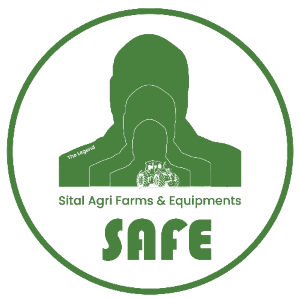If you’re stepping into the world of construction—whether as a contractor, engineer, or curious enthusiast—you’ll quickly realize just how vital the right equipment is to getting the job done. Machines of all shapes and sizes power the construction industry, each designed to tackle specific tasks. There’s a machine for everything, from digging and grading to lifting and paving.
But with so many types out there, it can feel overwhelming. That’s why we’ve put together this beginner’s guide to understanding construction equipment types. Whether you’re trying to identify machinery on a job site or planning your first equipment investment, this guide will help you make sense of it all.
1. Earthmoving Equipment: The Backbone of Construction
When it comes to moving earth, this category leads the way. These machines are designed to dig, haul, and shape the land to prepare construction sites.
Key Types:
- Excavators: Ideal for digging trenches, foundations, and demolition.
- Bulldozers: Known for their strength in pushing large quantities of soil or debris.
- Backhoe Loaders: A versatile mix of excavator and loader, great for small to medium projects.
- Skid Steer Loaders: Compact and agile, perfect for confined spaces and lighter tasks.
Best Use Cases:
- Site clearing
- Foundation work
- Trenching
- Grading land
These machines are often the first to arrive and the last to leave a construction site.
2. Material Handling Equipment: Moving the Heavy Stuff
Once your site is prepped, you’ll need tools to lift and move materials around efficiently. Material handling equipment does exactly that.
Key Types:
- Cranes: For lifting heavy loads vertically and moving them across a site.
- Forklifts: Ideal for warehouse loading and material stacking.
- Telehandlers: A hybrid between a crane and a forklift, perfect for reaching tough spots.
Best Use Cases:
- High-rise construction
- Bridge building
- Warehousing
- Utility installation
These machines are essential when working with steel beams, concrete blocks, and pallets that are too heavy to move manually.
3. Road Construction Equipment: Paving the Way Forward
Building roads requires precision and power. Road construction machines ensure surfaces are smooth, strong, and built to last.
Key Types:
- Graders: These are used for leveling and finishing the road surface.
- Pavers: Lay asphalt evenly and at the desired thickness.
- Compactors (Rollers): Compress soil, gravel, and asphalt for a solid foundation.
Best Use Cases:
- Highway and street construction
- Airport runways
- Urban infrastructure development
Good road equipment means fewer potholes and longer-lasting surfaces—key for efficient transportation.
4. Concrete Equipment: Building Solid Structures
Concrete is a construction staple, and specialized equipment makes it easier to mix, transport, and pour.
Key Types:
- Concrete Mixers: Combine cement, water, and aggregates for ready-to-use concrete.
- Concrete Pumps: Transfer concrete from the mixer to high or hard-to-reach places.
- Batching Plants: Provide mass concrete supply for large projects.
Best Use Cases:
- High-rise buildings
- Bridges and flyovers
- Dams and industrial structures
Using the right concrete equipment leads to stronger, more durable buildings with faster turnaround times.
5. Lifting and Hoisting Equipment: Reaching New Heights
Whether placing beams on a 10-story building or lifting pipes into trenches, lifting equipment ensures safety and efficiency.
Key Types:
- Tower Cranes are essential for skyscraper construction.
- Mobile Cranes: Versatile and movable, used for various lifting tasks.
- Winches and Hoists: Great for small lifting jobs and vertical movement in confined areas.
Best Use Cases:
- High-rise construction
- Industrial installations
- Shipping yards
These machines reduce manual labor and help prevent injuries on-site.
6. Drilling and Foundation Equipment: Going Deep
Deep foundation work requires specialized equipment that penetrates soil, rock, and other tough materials.
Key Types:
- Pile Drivers: Drive steel, concrete, or timber piles into the ground.
- Drilling Rigs: Used to bore holes for foundations, wells, or utilities.
- Augers: Drill precise holes for poles or pillars.
Best Use Cases:
- Skyscraper foundations
- Bridge supports
- Underground utilities
Without proper drilling equipment, projects can face serious delays and safety issues.
7. Utility Equipment: Supporting Roles with Big Impacts
Sometimes, the unsung heroes, these machines, keep the site functional and safe.
Key Types:
- Generators: Provide electricity to power tools and machinery.
- Air Compressors: Run pneumatic tools like jackhammers.
- Lighting Towers: Illuminate job sites for night work or poor light conditions.
Best Use Cases:
- Remote sites with no grid power
- Tunnel or night work
- Emergency power backup
They ensure the site runs smoothly, especially in challenging or non-traditional environments.
Tips for Beginners: Choosing the Right Equipment
- Start with your project size: Small jobs may only need basic loaders or backhoes.
- Factor in terrain: Rough terrain may require track-based machinery instead of wheels.
- Consider fuel efficiency: Some modern machines offer better fuel economy.
- Prioritize safety features: Look for equipment with ROPS, seat belts, and safety sensors.
- Check for after-sales support: Reliable service is key to reducing downtime.
Final Thoughts
Understanding the different types of construction equipment is crucial for anyone looking to succeed in the industry. Each category serves a specific function, and using the right machine for the job ensures greater efficiency, safety, and cost savings.
Whether building roads, digging foundations, or lifting steel, the right equipment makes all the difference. Think of these machines as your site’s workforce—they do the heavy lifting, the precise digging, and the material moving so your project runs on time and under budget.
With this guide in hand, you’re no longer just another beginner—you’re a step closer to becoming a construction pro.

